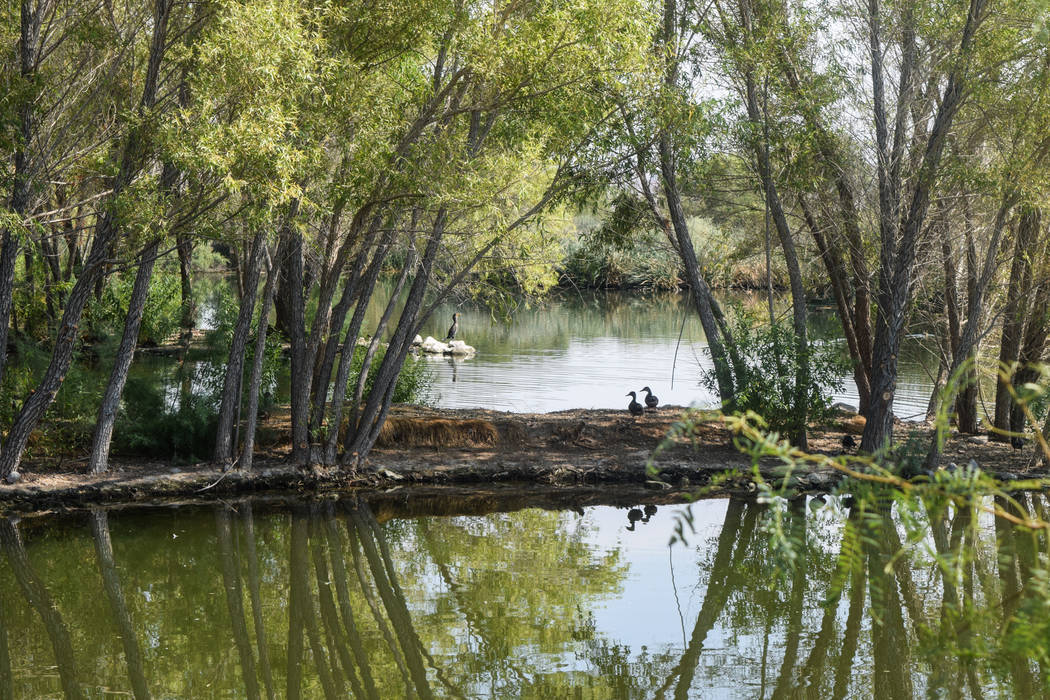Henderson Bird Viewing Preserve gets its share of international visitors
Located on the edge of the Pacific Flyway, a north-south route for migratory birds extending from Alaska to the tip of South America, the Henderson Bird Viewing Preserve is a popular destination for winged visitors and their admirers.
“Take the roadways away and the benches, this is a rough idea of what the valley would look like before man came here,” said senior recreation assistant Jim Hulsey, who has worked at the preserve for 15 years.
The preserve began as a publicly-recognized haven for birds when the Red Rock Audubon Society partnered with expert birders in 1967 for their annual Christmas bird count. At the event, birders explored designated areas to track a habitat’s effects on different species. It became part of Henderson Parks and Recreation in 1998.
Since then, the preserve has identified 295 unique bird species, said public information officer Kim Becker. Every newly sighted bird is reported to the Audubon Society.
“There’s a lot more wildlife in this valley than people realize,” Hulsey said. “Many think nothing lives in the desert.”
The resident desert birds at the preserve include New World quail, loons, grebes, pelicans, ibises, roadrunners, tyrant flycatchers and plovers. It’s important visitors don’t feed them, Becker said, because they will grow to rely on people for food and will forget how to forage for themselves.
The preserve is also home to rabbits, coyotes, bullfrogs, snakes and lizards.
Some other frequent visitors include students on school field trips, scouting groups, senior groups and bird enthusiasts, some of whom visit daily, Becker said.
Many international birders visit to check off species from their list of birds to see. Over the past two years, the preserve has had visitors from the Netherlands, Scotland, Norway, New Zealand and Japan. A map in the entryway has pins to mark the places visitors have traveled from.
The preserve had nearly 12,000 visitors in 2016, Becker said.
“We are actually in European guidebooks,” Hulsey said.
The site is also adjacent to a wastewater reclamation facility, which treats water to be reused in the valley. The preserve partners with it to maintain pond levels and keep up maintenance for various habitats.
Any change to the environment potentially could disrupt the ecosystem, Becker said.
The preserve offers guided tours, and the earlier the visit, the more birds are likely to be seen, Becker said. The staff also provides an electric vehicle they call the “bird mobile,” for visitors with mobility issues. Becker recommends visitors call a week in advance to schedule a tour.
There are birds at the preserve year-round, but their numbers vary depending on the season, Becker said. Winter and early spring are ideal for seeing the various species of duck, while summer is a good time to see native birds.
Fall is when the migrating birds arrive.
For those who tour with Hulsey, he might tell you about the lesser-known history of the Las Vegas Valley: the lush, green trees and large artesian springs. It’s that early vegetation that attracted birds to the valley in the first place.
“They’ve been coming here for millenia,” Hulsey said.
Contact Alex Meyer at ameyer@viewnews.com or 702-383-0496. Follow @alxmey on Twitter.
Henderson Bird Viewing Preserve
Address: 350 E. Galleria Drive
Hours: 6 a.m.-2 p.m. daily
More information: 702-267-4180 or tinyurl.com/hmr5dqf


























